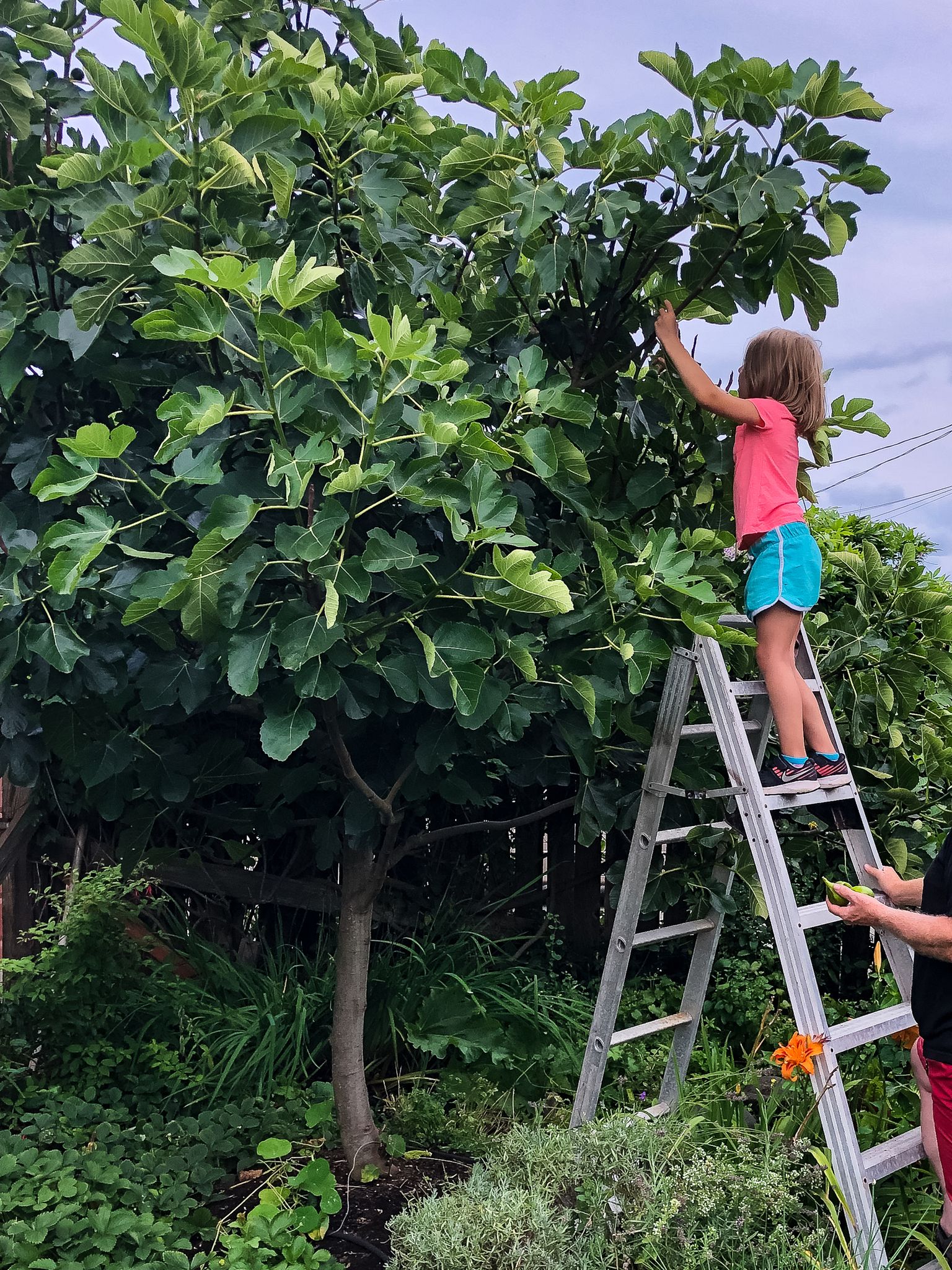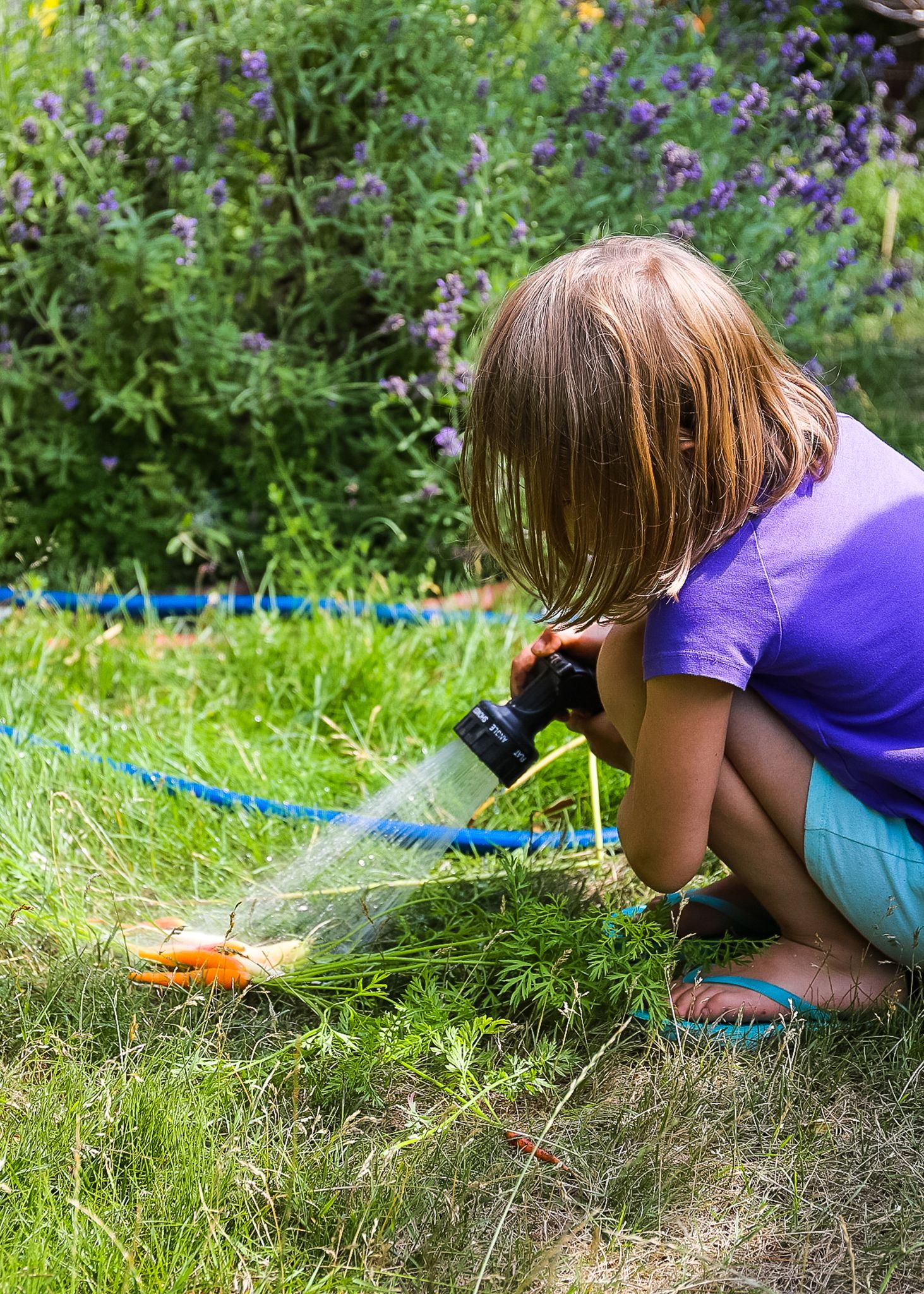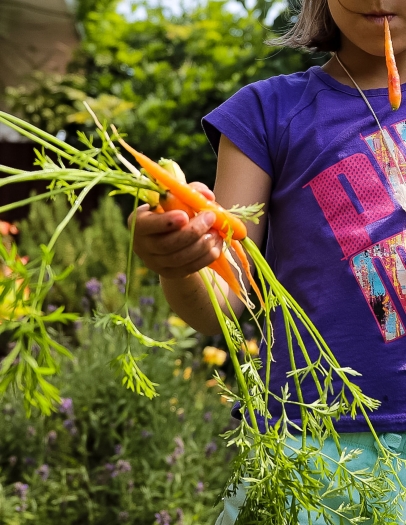Growing Gardeners
I have fond memories of time in my great grandfather’s, grandmother’s and my mother’s gardens, tasting sun-warmed peas, carrots and tomatoes. They were always smiling; I thought it was because of me. Now I know it was probably the act of gardening itself that brought them such joy. Just 30 minutes of gardening per day is proven to significantly reduce stress.
When I started my current garden years ago, my goal was to create an edible oasis. I wanted my children to be able to wander the garden and taste freely. Now 10 years old, my youngest daughter can name almost everything in the garden, and she loves to eat it all. Whether snacking, picking a bouquet or helping gather herbs for dinner, gardening has become second nature to her.
Besides just the pure joy, there are so many reasons to engage your kids in gardening:
1. They will learn important STEM skills like botany, math, chemistry and meteorology.
2. As they practice patience and perseverance, they will further develop emotional and interpersonal skills. (Nature’s rewards and disappointments are learned too.)
3. Gardening is a great way to spend time together as a family.
4. Growing their own food (or learning where it comes from) helps develop good eating habits.
5. Working in the garden is a proven stress reliever—because yes, kids have stress too!
No yard? No problem. Gardening can be done on as big or as small a scale as you like. If you don’t have a yard, a few containers on a deck or patio are great. You can do small plants, flowers or microgreens in a sunny window, or sign up for a plot in a community garden.
 Seeds for success
Seeds for success
To keep kids engaged, it’s best to offer them choices. What would they like to grow or do in the garden? Once you get some direction, try to choose simple projects or easy growing crops to help them succeed. Fast-growing seeds that reach maturity quickly will help them see results sooner, adding to their excitement.
Some of my favourite fun crops are peas, potatoes, radishes, carrots, cherry tomatoes and leafy greens. Peas grow fast and early in the season. They are a perfect height for kids to pick and delicious to eat. Radishes are fast, and carrots are simple to sow and fun to pull out, rinsing and eating as they go. Digging up potatoes is like mining for gold, allowing a child to fill their bucket quickly. Cherry tomatoes are usually faster to ripen than full size tomatoes and are an especially delicious juicy outdoor snack.
Sunflowers, nasturtiums and lavender are great flower choices. These happen to be my favourite because they are edible and easy. Sunflowers are dramatic and showy; lavender is gorgeously scented; and nasturtiums are fast growing and their flowers make a plain green salad into something spectacular.
Theme gardens for kids
Choosing a theme for your garden or planters is another great way to get your child excited.
Fairy gardens fire up the imagination planted with short growing flowers and tiny alpine strawberries. This miniature garden can be planted in a container or any small unused corner of your yard. A three sisters garden is a fun lesson on companion planting with tall corn supporting squash and tall, twining beans. What about a round pizza garden? Plant each “wedge” with an ingredient like basil, parsley, garlic, peppers, onions and tomatoes. More themes include a wildflower garden, dried flower garden or an herb garden.
For older kids, a victory garden is a great teaching garden. Victory gardens began during the First World War and gained popularity during the Second World War. These food gardens teach self-expression, food security and self-reliance, among other things.
Fun garden activities
You don’t have to have a garden to enjoy gardening activities. Try some of these fun ideas:
1. Gather flowers and press them between paper towels in a heavy book.
2. Try planting seeds in eggshells or toilet paper rolls.
3. Grow a batch of sprouts (3–5 days) or microgreens (2–3 weeks).
4. Save kitchen scraps like celery, green onions, sprouting old potatoes or romaine and set them in water to regrow. Avocado pits and lemon seeds make a fun indoor plant project.
5. Got trees? Rake a pile of leaves together and jump in them after.
6. In the heat of the summer, give them a watering can or hose and let them water the yard. It’ll help them stay cool while being helpful.
7. Send kids to pick ripe fruits and veggies. Don’t fret if they eat them as they go—that’s the point!
8. Build or hang a birdfeeder or set up a small wooden bee house to host mason bees.
A job well done
Gardening also gives us a wonderful opportunity to teach our kids about the importance of sharing. Encourage them to gift any extra flowers or produce to friends, family or charity, and watch the look of pride on their face as they say they grew it themselves.





